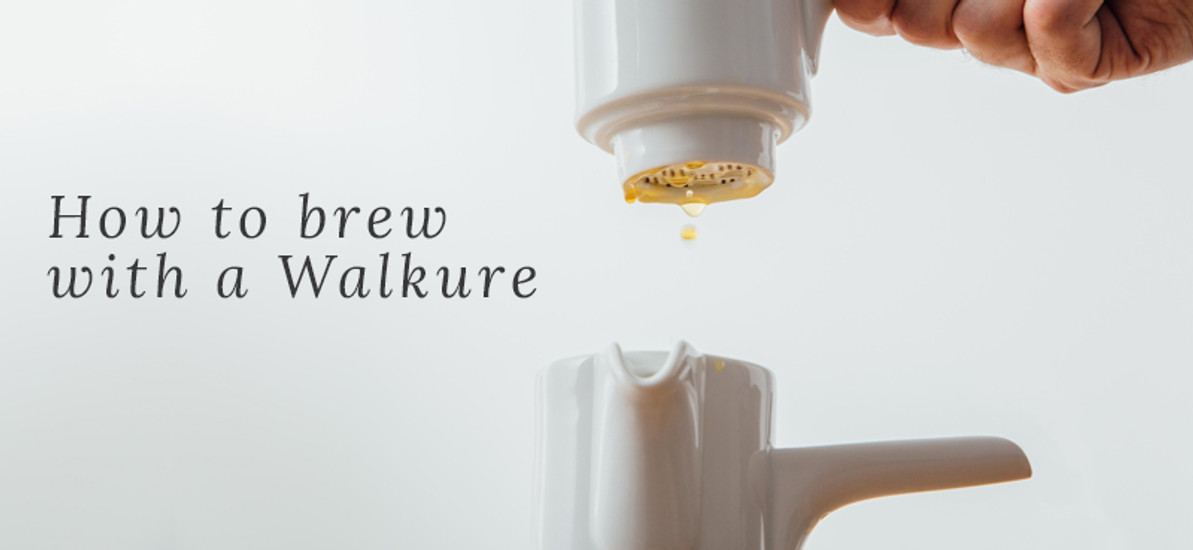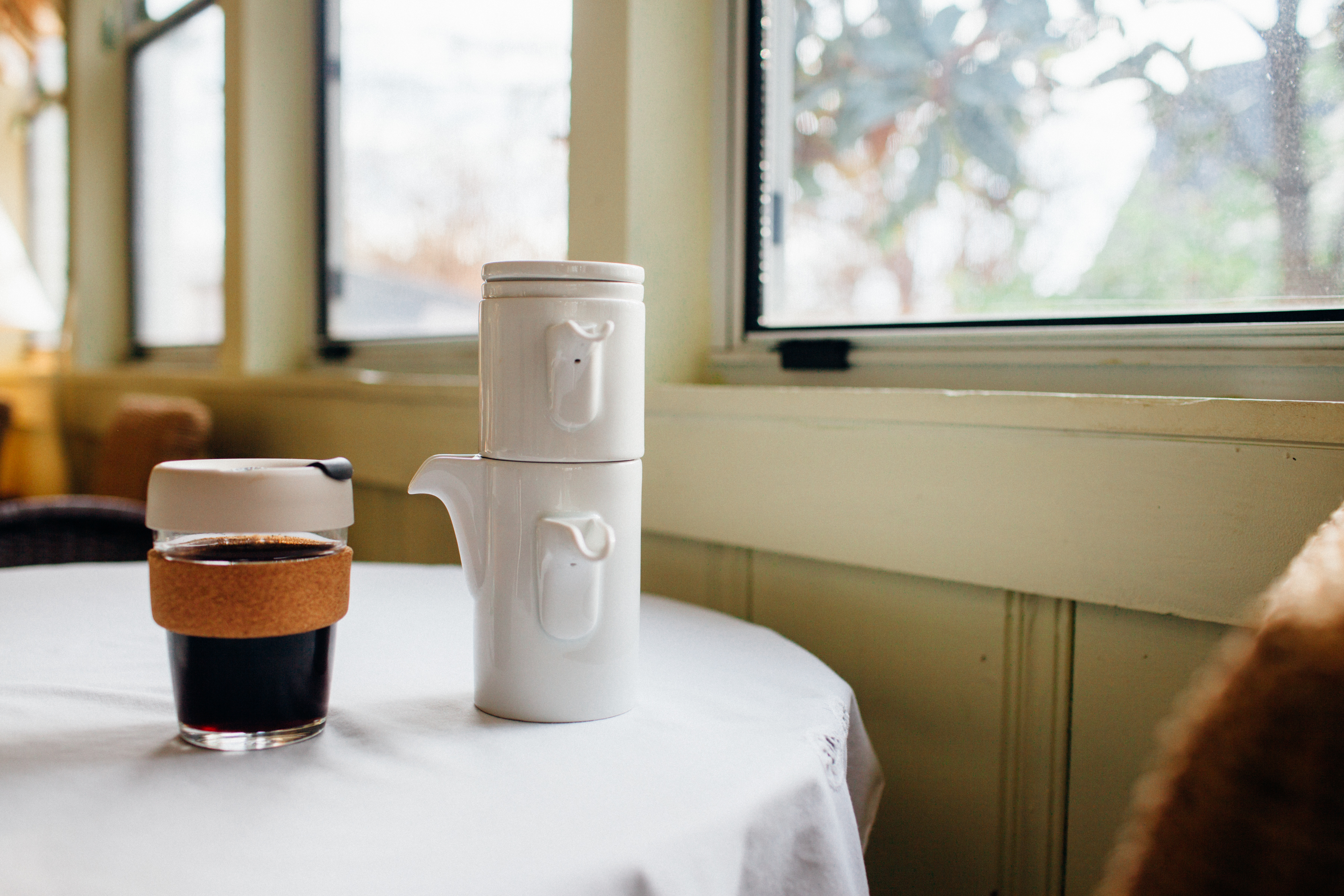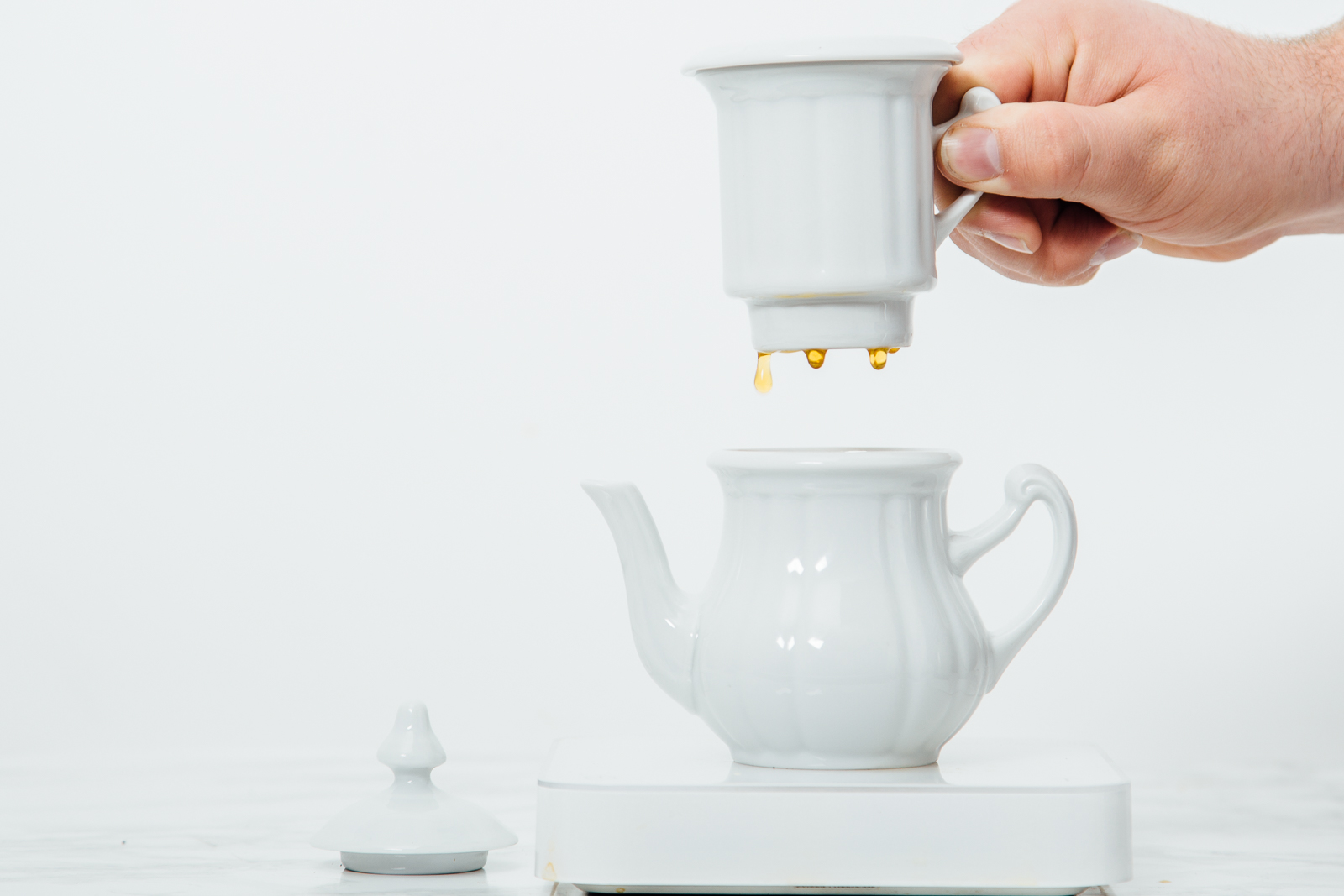How to Brew Coffee with a Walkure Porcelain Brewer
Few coffee brewers capture attention quite like the Walkure. Although it’s one of the most unique brewers it’s also one of the most approachable. No fancy gooseneck kettles, pouring techniques, or accessories required -- just a grinder, coffee, and hot water. Let’s discuss the Walkure in a bit more detail, then dive in and get brewing!
Few coffee brewers capture attention quite like the Walkure. Designed by artist Daniel Eltner, this elegant German-made porcelain brewer is a virtual reinvention of the common pourover. A coherent four-piece design and built-in porcelain grid filter make the Walkure - German for "Valkyrie" - one of the most unique brewers made today. Due to its shape and functionality the brewer promotes a full-bodied yet remarkably clean cup, reminiscent of a cloth filter method. The Walkure is conveniently available in 5 sizes across both traditional and modern styles. The Bayreuth, available in 2 sizes, features straight lines and a contemporary feel. If a timeless look is more your taste, the classically styled Karlsbad is available in 3 sizes. Although it’s one of the most unique brewers it’s also one of the most approachable. No fancy gooseneck kettles, pouring techniques, or accessories required -- just a grinder, coffee, and hot water. Let’s discuss the Walkure in a bit more detail, then dive in and get brewing!
Breaking it down:
The Walkure consists of 4 parts: A dispersion plate, a brewing chamber, a carafe, and a lid.
The dispersion plate (as we like to call it) is a shallow six-holed cylinder that hangs on the rim of the Walkure’s body and over the grounds. Pour water, from any device, directly into the center and the plate will gently and evenly disperse it across the bed of grounds. This piece is crucial to the Walkure for two reasons:
- First, it negates the need for a gooseneck kettle and a refined pouring technique because it disperses water in six directions. Even a teapot is sufficient for the Walkure.
- Second, dividing the water stream from your pouring device six ways ensures a gentle introduction of water to the grounds. Because the brew bed in the Walkure is relatively shallow, and because the porcelain filter has large holes, keeping water agitation at the top of the slurry ensures less grounds are pummeled and forced through the filter. This process helps maintain the depth and evenness of the coffee bed throughout the brew, promoting a more even extraction and allowing for a finer grind than you’d expect.
The brewing chamber, which is the large cylinder on top of the carafe, is the most important piece of the Walkure brewer. At the bottom, a cross-hatched dual-layer porcelain grid acts as a filter, and is all that separates the grounds from the carafe. Its holes are sufficient enough to filter semi-coarse to coarse grounds. Thick porcelain walls help to maintain temperature stability, and a long handle allows the center chamber to be moved without burning your hand.
The carafe, featuring the same thick walls as the brewing chamber, also works to maintain the heat of your brew. The long handle, just like the handle on the brewing chamber, keeps the carafe cool to the touch while decanting.
The lid of the Walkure serves more as a stylistic attribute, completing the look of the Walkure’s sleek design. It also helps keep dust out of the dispersion plate and brew chamber when the brewer isn’t being used.
Why I love the Walkure
Minimalism, modern (or classic) design, an ability to extract coffee evenly, and never needing to buy paper filters are all great reasons to love this brewer. When a new bag of coffee arrives the Walkure is often my go-to device. Before switching over to a paper filter method I sometimes like to taste coffee, uninhibited.by a paper filter, to get a fuller sense of what flavors are available. Sometimes paper filters work incredibly well to highlight certain coffees and their attributes, but other times they withhold desirable flavors. Having a few types of filters around is a great way to explore possibilities in a coffee.
Another reason I love the Walkure is its cleanliness. Looking down through the filter you’d expect a lot of solids to permeate and create a french-press like cup but, thanks to a neat process called "cake filtration", that isn’t the case. Cake filtration can be defined simply as coffee helping to filter itself. Because of the depth of the Walkure’s coffee bed and the minimal agitation in its brew process, a cake of coffee sticks together and helps trap colloids and suspended solids that would otherwise permeate the filter in a slurry. The results are a remarkably clean cup with medium body and very few solids in the bottom of your cup. Somehow, the Walkure preserves the delicate acidity of some coffees while also maintaining sweetness.
How to Brew with the Walkure
(For Bayreuth 11.8 oz and Karlsbad 12.85 oz, see adjustments below for other sizes)
- Start by rinsing and pre-heating your Walkure with hot water. This ensures minimal heat loss when brewing begins. Wetting the porcelain filter also helps ‘coagulate’ the first grounds hitting the filter, minimizing fall-through.
- Add 20g of coffee, ground medium-coarse to coarse (think coarse salt or raw sugar granules). Gently shake the brew chamber to settle the grounds into a flat bed.
- Put the dispersion plate in place and tare your scale to zero. Pre-wet your grounds with about 50ml of water off boil (or around twice the weight of the coffee grounds). Wait 30 seconds. *Water just off boil is best because of the heat loss on the dispersion plate.
- Begin your first pour. Pour continually until the brew chamber is full. Pro tip: Watch the water dispersing on the dispersion plate. The circle of water will begin the tighten when the brew chamber has reached max capacity. Watch closely to determine when it’s time to stop pouring. If a few grounds overflow onto the top of the dispersion plate, don’t fret.
- Remove the dispersion plate and gently stir the crust of the slurry, making sure most of the grounds are submerged. This should take about 4-5 seconds. Replace the dispersion plate.
- Allow about 75% of the water to drain. You may need to peek under the dispersion plate to check your progress every now and then.
- Repeat step 4 until you reach 300ml - 320ml, refilling the brewing chamber when water is 75% drained. Total brew time should be around 4:00-4:30.
Karlsbad 9.47 oz:
- Use 14g of coffee, ground medium-coarse.
- 224ml of water.
Karlsbad 28.75 oz:
- Use 40g of coffee, ground coarse.
- 640ml of water.
Bayreuth 23.67 oz:
- Use 35g of coffee, ground coarse.
- 560ml of water.
After brewing and decanting, empty the grounds and rinse the entire brewer under warm water. Sometimes grounds will become lodged in the porcelain filter grid that can not be removed through rinsing or scrubbing. It’s good to have a small brush or toothpick available to remove these few particles. Do not put the brewing chamber in the dishwasher -- the porcelain filter is fragile and susceptible to damage.
It’s important to note that smaller or larger doses can be brewed with each size Walkure, but there are some limits. Each brewer is capable of brewing to Walkure’s advertised ounce capacity, but doing so results in a coffee bed that’s very thick and a brew time that may be too long. Smaller doses can be used, but using less water necessitates a finer grind because brew time will be shortened. Anything smaller than ‘medium’ sized grounds (a bit finer than medium-coarse) may fall through the Walkure’s porcelain filter. These recommended parameters are designed to utilize the most capacity while ensuring optimal brew times. You could call them the "sweet spot".
That’s it! Brewing with the Walkure is pretty rewarding, yet requires less direction and practice than other pour overs. The most difficult part will be dialing in your grind size for the right brew time. We invite you to add this beautiful porcelain brewer to your brewing arsenal for a wider palette of flavor possibilities. We think you’ll love it.








